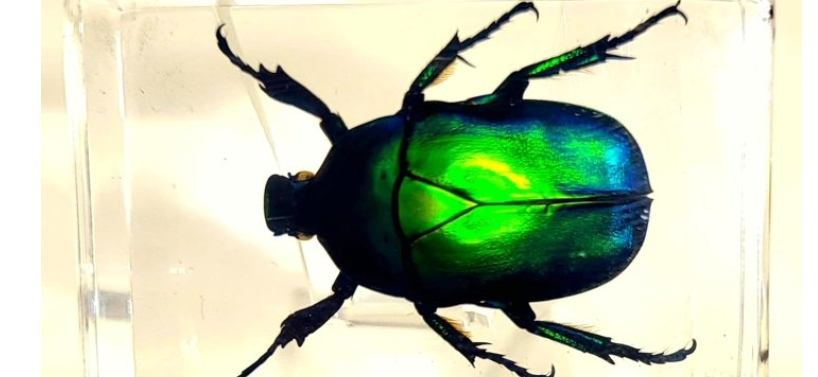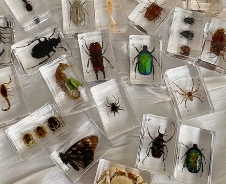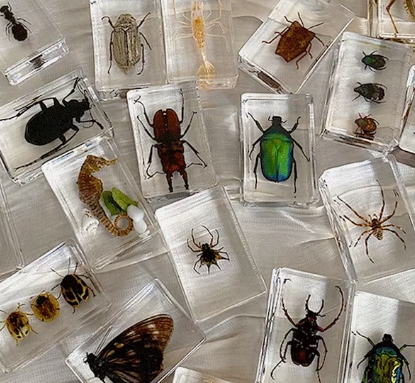Insect specimens are professional collections for the systematic preservation and display of insects and are widely used in scientific research, education and natural hobbies. The process of preparing an insect specimen usually consists of several steps: capturing, fixing, drying, marking and displaying.
First, the insects are carefully captured and preserved with a fixing solution such as ethanol to preserve their form and color. Next, the insect is placed in a specially made specimen frame, and a needle or other tool is used to hold it in place to display its features. The process requires delicate manipulation to ensure that details such as the insect's body parts and wings are well represented.
Drying is a key step in preparing insect specimens. Insects need to retain their original shape during the drying process to avoid deformation or damage. After drying, the insects are packed into specimen boxes with labels, which usually indicate important data such as the location, time, and classification information of the insects. These labels are essential for scientific research and for recording data.
Insect specimens not only help scientists study insect classification, ecology and evolution, but can also be used in education to help students understand the diversity and characteristics of insects. For nature lovers and collectors, insect specimens are a true reflection of the beauty and complexity of the natural world, and a valuable natural heritage.




